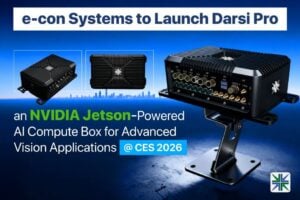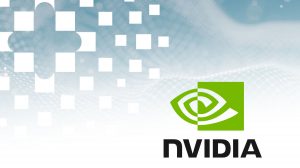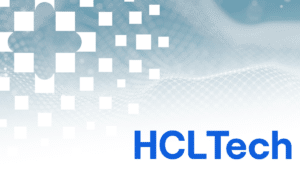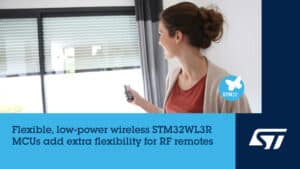Processors for Embedded Vision
THIS TECHNOLOGY CATEGORY INCLUDES ANY DEVICE THAT EXECUTES VISION ALGORITHMS OR VISION SYSTEM CONTROL SOFTWARE
This technology category includes any device that executes vision algorithms or vision system control software. The following diagram shows a typical computer vision pipeline; processors are often optimized for the compute-intensive portions of the software workload.

The following examples represent distinctly different types of processor architectures for embedded vision, and each has advantages and trade-offs that depend on the workload. For this reason, many devices combine multiple processor types into a heterogeneous computing environment, often integrated into a single semiconductor component. In addition, a processor can be accelerated by dedicated hardware that improves performance on computer vision algorithms.
General-purpose CPUs
While computer vision algorithms can run on most general-purpose CPUs, desktop processors may not meet the design constraints of some systems. However, x86 processors and system boards can leverage the PC infrastructure for low-cost hardware and broadly-supported software development tools. Several Alliance Member companies also offer devices that integrate a RISC CPU core. A general-purpose CPU is best suited for heuristics, complex decision-making, network access, user interface, storage management, and overall control. A general purpose CPU may be paired with a vision-specialized device for better performance on pixel-level processing.
Graphics Processing Units
High-performance GPUs deliver massive amounts of parallel computing potential, and graphics processors can be used to accelerate the portions of the computer vision pipeline that perform parallel processing on pixel data. While General Purpose GPUs (GPGPUs) have primarily been used for high-performance computing (HPC), even mobile graphics processors and integrated graphics cores are gaining GPGPU capability—meeting the power constraints for a wider range of vision applications. In designs that require 3D processing in addition to embedded vision, a GPU will already be part of the system and can be used to assist a general-purpose CPU with many computer vision algorithms. Many examples exist of x86-based embedded systems with discrete GPGPUs.
Digital Signal Processors
DSPs are very efficient for processing streaming data, since the bus and memory architecture are optimized to process high-speed data as it traverses the system. This architecture makes DSPs an excellent solution for processing image pixel data as it streams from a sensor source. Many DSPs for vision have been enhanced with coprocessors that are optimized for processing video inputs and accelerating computer vision algorithms. The specialized nature of DSPs makes these devices inefficient for processing general-purpose software workloads, so DSPs are usually paired with a RISC processor to create a heterogeneous computing environment that offers the best of both worlds.
Field Programmable Gate Arrays (FPGAs)
Instead of incurring the high cost and long lead-times for a custom ASIC to accelerate computer vision systems, designers can implement an FPGA to offer a reprogrammable solution for hardware acceleration. With millions of programmable gates, hundreds of I/O pins, and compute performance in the trillions of multiply-accumulates/sec (tera-MACs), high-end FPGAs offer the potential for highest performance in a vision system. Unlike a CPU, which has to time-slice or multi-thread tasks as they compete for compute resources, an FPGA has the advantage of being able to simultaneously accelerate multiple portions of a computer vision pipeline. Since the parallel nature of FPGAs offers so much advantage for accelerating computer vision, many of the algorithms are available as optimized libraries from semiconductor vendors. These computer vision libraries also include preconfigured interface blocks for connecting to other vision devices, such as IP cameras.
Vision-Specific Processors and Cores
Application-specific standard products (ASSPs) are specialized, highly integrated chips tailored for specific applications or application sets. ASSPs may incorporate a CPU, or use a separate CPU chip. By virtue of their specialization, ASSPs for vision processing typically deliver superior cost- and energy-efficiency compared with other types of processing solutions. Among other techniques, ASSPs deliver this efficiency through the use of specialized coprocessors and accelerators. And, because ASSPs are by definition focused on a specific application, they are usually provided with extensive associated software. This same specialization, however, means that an ASSP designed for vision is typically not suitable for other applications. ASSPs’ unique architectures can also make programming them more difficult than with other kinds of processors; some ASSPs are not user-programmable.

Arm at NeurIPS 2025: How AI research is shaping the future of intelligent computing
This blog post was originally published at Arm’s website. It is reprinted here with the permission of Arm. NeurIPS 2025 provided Arm with a unique opportunity to share the latest technical trends and insights with the global AI research community. NeurIPS is one of the world’s leading AI research conferences, acting as a thriving global hub for

The architecture shift powering next-gen industrial AI
This blog post was originally published at Arm’s website. It is reprinted here with the permission of Arm. How Arm is powering the shift to flexible AI-ready, energy-efficient compute at the “Industrial Edge.” Industrial automation is undergoing a foundational shift. From industrial PC to edge gateways and smart sensors, compute needs at the edge are changing fast. AI is moving

Ambarella’s CV3-AD655 Surround View with IMG BXM GPU: A Case Study
The CV3-AD family block diagram. This blog post was originally published at Imagination Technologies’ website. It is reprinted here with the permission of Imagination Technologies. Ambarella’s CV3-AD655 autonomous driving AI domain controller pairs energy-efficient compute with Imagination’s IMG BXM GPU to enable real-time surround-view visualisation for L2++/L3 vehicles. This case study outlines the industry shift

e-con Systems to Launch Darsi Pro, an NVIDIA Jetson-Powered AI Compute Box for Advanced Vision Applications
This blog post was originally published at e-con Systems’ website. It is reprinted here with the permission of e-con Systems. This blog offers expert insights into Darsi Pro, how it delivers a unified vision solution, and what it brings to alleviate modern workloads. Darsi Pro comes with GMSL camera options, rugged design, OTA support, and

Overcoming the Skies: Navigating the Challenges of Drone Autonomy
This blog post was originally published at Inuitive’s website. It is reprinted here with the permission of Inuitive. From early military prototypes to today’s complex commercial operations, drones have evolved from experimental aircraft into essential tools across industries. Since the FAA issued its first commercial permit in 2006, applications have rapidly expanded—from disaster relief and

AMD Spartan UltraScale+ FPGA Kit Adds Proven Infineon HyperRAM Support for Edge AI Designs
Somewhat eclipsed by last week’s announcement that the AMD Spartan™ UltraScale+™ FPGA SCU35 Evaluation Kit is now available, AMD and Infineon have disclosed successful validation of Infineon’s 64-Mb HYPERRAM™ memory and HYPERRAM controller IP on the platform. This collaboration expands the kit’s value for engineers building edge AI and computer vision systems. The SCU35 kit,

NVIDIA and Synopsys Announce Strategic Partnership to Revolutionize Engineering and Design
Key Highlights Multiyear collaboration spans NVIDIA CUDA accelerated computing, agentic and physical AI, and Omniverse digital twins to achieve simulation speed and scale previously unattainable through traditional CPU computing — opening new market opportunities across engineering. To further adoption of GPU-accelerated engineering solutions, the companies will collaborate in engineering and marketing activities. NVIDIA invested $2

Now Available: AMD Spartan UltraScale+ FPGA SCU35 Evaluation Kit–An Affordable Platform for Every Developer
November 25, 2025 The AMD Spartan™ UltraScale+™ FPGA SCU35 Evaluation Kit is now available for order. Built by AMD, this platform offers customers an accelerated path to production with Spartan UltraScale+ FPGAs. The kit features the Spartan UltraScale+ SU35P device that offers I/O expansion and board management capabilities. It also brings several new advances to

The 8-Series Reimagined: Snapdragon 8 Gen 5 Delivers Premium Performance and Experiences
San Diego, California November 25, 2025 — Qualcomm Technologies, Inc. today announced the Snapdragon® 8 Gen 5 Mobile Platform, a premium offering that combines outstanding performance with cutting-edge technologies, raising the bar for flagship mobile experiences. Key Takeaways: The Snapdragon 8-series continues to expand premium smartphone technologies, fueling many of the world’s leading flagship devices,

Microcontrollers enter a new growth cycle as the market targets US$34 billion in 2030
This market research report was originally published at the Yole Group’s website. It is reprinted here with the permission of the Yole Group. Yole Group releases its annual Status of the Microcontroller Industry report and expands its quarterly Microcontroller Market Monitor, delivering long-range strategic insights and detailed market tracking Key Takeaways: The global MCU market

Nota AI Signs Technology Collaboration Agreement with Samsung Electronics for Exynos AI Optimization “Driving the Popularization of On-Device Generative AI”
Nota AI’s optimization technology integrated into Samsung Electronics’ Exynos AI Studio, enhancing efficiency in on-device AI model development Seoul, South Korea Nov.26, 2025 — Nota AI, a company specializing in AI model compression and optimization, announced today that it has signed a collaboration agreement with Samsung Electronics’ System LSI Business to provide its AI

WAVE-N v2: Chips&Media’s Custom NPU Retains 16-bit FP for Superior Efficiency at High TOPS
Nov 26, 2025 Seoul, South Korea — Chips&Media is announcing that the next-generation customized NPU, WAVE-N v2, is ready for release, delivering higher computational power along with improved area and power efficiency. WAVE-N v2 is also designed to support a wider range of applications, such as object detection and segmentation, in addition to visual quality enhancement

Let’s Visit the Zoo
This blog post was originally published at Quadric’s website. It is reprinted here with the permission of Quadric. The term “model zoo” first gained prominence in the world of AI / machine learning beginning in the 2016-2017 timeframe. Originally used to describe open-source public repositories of working AI models – the most prominent of which today

Cadence Adds 10 New VIP to Strengthen Verification IP Portfolio for AI Designs
This article was originally published at Cadence’s website. It is reprinted here with the permission of Cadence. Cadence has unveiled 10 Verification IP (VIP) for key emerging interfaces tuned for AI-based designs, including Ultra Accelerator Link (UALink), Ultra Ethernet (UEC), LPDDR6, UCIe 3.0, AMBA CHI-H, Embedded USB v2 (eUSB2), and UniPro 3.0. These new VIP will

The New Metis PCIe with 4 Quad-Core AIPUs is Here
Big update from the Metis world: the epic new 4-core PCIe card is now available to order over on the store. Huge performance shift that opens up seriously scalable edge AI. Key specs: 856 TOPS (INT8) Choice of 16GB and 64GB DRAM ~12,800 FPS on ResNet-50 Runs dozens of streams or parallel models per board

How semiconductor equipment makers will drive the next $1 trillion wave
This blog post was originally published at HCLTech’s website. It is reprinted here with the permission of HCLTech. Key takeaways AI, mobility and cloud are the growth engines: They’re pushing chips toward a $1 trillion market by 2030 and forcing fabs to invest in sub-3nm nodes and advanced packaging Chips are bigger and more complex: Larger dies and

VC MIPI Cameras & ADLINK i.MX 8M Plus: Full driver support
Ettlingen, November 18, 2025 — For a medical imaging project, ADLINK wanted to integrate VC MIPI Cameras with its I-Pi SMARC IMX8M Plus Development Kit. Vision Components adapted the standard driver for the NXP i.MX 8M Plus processor platform to the ADLINK board, including full ISP support, for features such as color tuning etc. As

STMicroelectronics introduces new battery-saving wireless microcontrollers optimized for remote controls
Nov 18, 2025 Geneva, Switzerland STM32WL3R MCUs add flexible features to low-power radio for superior user experiences in consumer electronics and home automation Integrated in new RF remotes from building-automation leader Somfy STMicroelectronics has introduced the STM32WL3R, a wireless microcontroller (MCU) optimized for remote control units in consumer products and home automation. Evolved from the proven STM32WL3

Trends in Embedded AI: Designing Hardware for Machine Learning on the Edge
This blog post was originally published at Tessolve’s website. It is reprinted here with the permission of Tessolve. The world is increasingly becoming connected, intelligent, and autonomous. At the core of this transformation is Artificial Intelligence (AI), which is swiftly transitioning from the cloud to the edge, nearer to where data is generated and actions are

Semiconductor industry 2025: worldwide dynamics and China’s strategic rise unveiled
This market research report was originally published at the Yole Group’s website. It is reprinted here with the permission of the Yole Group. The market research & strategy consulting company, Yole Group, delivers a dual perspective on global semiconductor dynamics and China’s fast-evolving industry landscape. Key Takeaways Global semiconductor device revenues are set to reach

